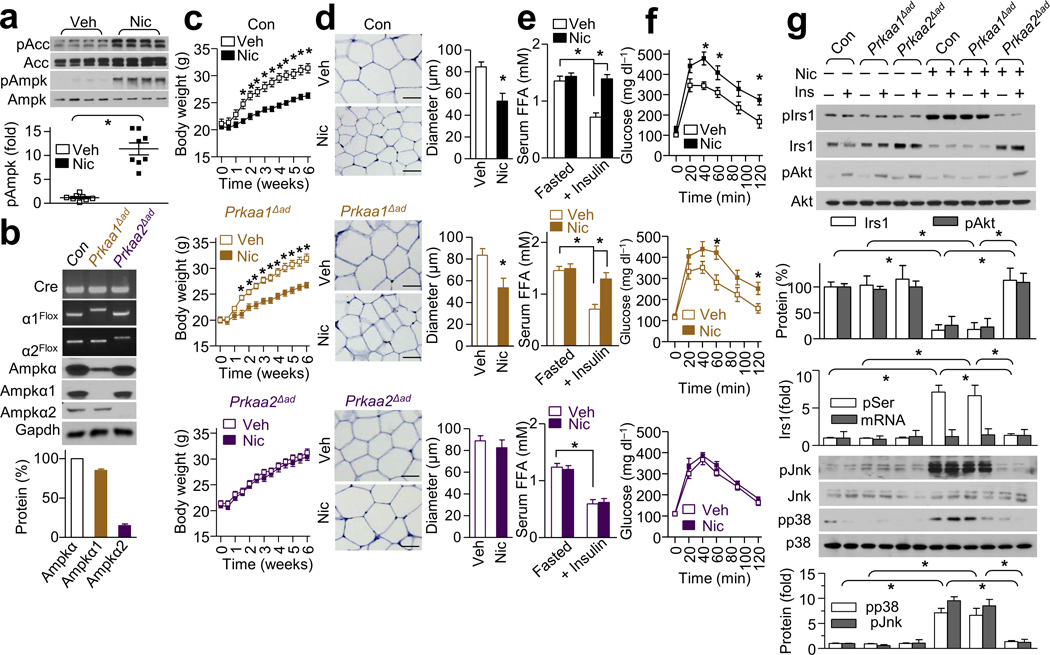Figure 4.
Adipose AMPKα2 is required for the nicotine-dependent inhibitory effects on weight gain and insulin signaling in mice. Nic or Veh was perfused in control (Con, black), Prkaa1Δad (brown) and Prkaa2Δad (purple) mice. (a) Phosphorylated AMPK at Thr172 (pAMPK) and phosphorylated ACC (pACC) expression in WAT; n = 8 each. (b) Genotypes of adipose-specific knockout mice and the expressions of AMPKα, AMPKα1, and AMPKα2 in isolated adipocytes; n = 8 each. (c) Body weight in mice perfused with Veh or Nic; n = 8–9 each. (d) Representative H&E-stained WAT sections (n = 10 section each) and the diameters of adipocytes in WAT (Scale bar, 50 µm); n = 8 each. (e) Serum FFA levels after overnight fasting (Fasted) or insulin perfusion at 40 min during ITT; n = 8 each. (f) IPGTT in mice treated with Veh or Nic; n = 8–9 each. (g) Irs1, pIrs1-Ser307 (pIrs1), pAkt-Ser473 (pAkt), p38, and JNK signaling in WAT of mice injected with saline or insulin (1 unit kg−1); n = 8 each. Significance determined by Student’s t-test (a,d), one-way ANOVA with repeated measures for the inter-assay evaluations (c,f), one-way ANOVA with Bonferroni’s post-hoc test (e,g) and *P < 0.05. All values are means ± SEM.

